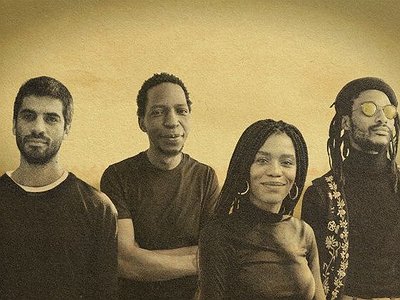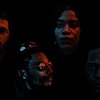Part 2
There are many descriptions of the ideal state of mind for being creative. What is it like for you? What supports this ideal state of mind and what are distractions? Are there strategies to enter into this state more easily?
Nonku Phiri: I don’t think there’s an ideal state of mind for creating. I could also say that this is informed by my experience of 2020, which feels like an on-going process of being in-residence, being in my own home, or be it with different spaces and bodies. I would say it’s more about creating the ideal environment and working with what you have, because everything serves as a form of inspiration.
It’s finding balance in every state of being. And what’s worked for me is just being in a constant state of surrendering. Creating a space that allows for one to cut away the fat, and purely articulate what needs to be communicated through me, by me, and can hopefully be understood and benefit a greater body. Because we are all connected in some way. It’s creating from a pure space.
Just surrender. Surrender and know when to discern between play, a need for structure, and one’s level of sensitivity — to create without any judgement, or create without any form of external impetus or pressure. A meditation of just plugging in and allowing for whatever comes out, whether or not it’s good or bad, for that day to just be.
How do you make use of technology? In terms of the feedback mechanism between technology and creativity, what do humans excel at, what do machines excel at?
Gontse Makhene: Sound at its outermost borders becomes matter. Matter that the sound is intended to create through the vibration. Word sound is power.
Production tools, from instruments to complex software environments, contribute to the compositional process. How does this manifest itself in your work? Can you describe the co-authorship between yourself and your tools?
Dion Monti: From a producer’s perspective the main tool (other than a computer) is simply listening and making decisions. With both SPAZA albums thus far it was about working with improvised work and making it flow as an album within the limitations that come with the formats we work with. It is about choosing the strongest moments and working around them without making our work noticeable. When to discard big chunks of the recordings, when to not touch a thing and stitching it all together again with invisible thread as if it all happened at the time as we hear it on the records.
When editing improvised live music there is not grid one can hold on to, one can just listen, negotiate and decide.
How do you see the relationship between sound, space and performance and what are some of your strategies and approaches of working with them?
Andrew Curnow: The relationship between sound, space and performances in the process of recording and producing albums has been a central focus for Mushroom Hour Half Hour since its inception. I read an article in The Wire Magazine about Kelan Phil Cohran and how he recorded the track “On The Beach,”. It spoke about how he and his Artistic Heritage Ensemble would rehearse all day, every day, as well as perform and record at a space they had occupied close to the lake in Chicago and also how he had spent a lot of time focusing on the relationship between sound frequencies and how they affect the human body / soul. I then listened to the song – On The Beach – and was mind blown. It was a life changing moment for me. Not only because the music itself resonated so deeply with my being, but also because it dawned on me that a musical recording doesn’t have to be a ‘good recording’ for it to be a moving piece of art.
That recording was in an untreated space, and you can hear people walking around ... talking ... coughing … some of the instruments far away, and some close ... you feel the magic of the space in the recording. This inspired us to start recording improvised performances with the musicians in our community. It’s hard to say with any certainty how the spaces we have recorded in – together with the environment / energies we created at those spaces – affected the recordings and the performances. But we have without a doubt felt that moment when everyone in a space – musicians, engineers, cooks, audience, friends – all lock into the moment and magic arrives in the air.
Our sense of hearing shares intriguing connections to other senses. From your experience, what are some of the most inspiring overlaps between different senses - and what do they tell us about the way our senses work? What happens to sound at its outermost borders?
Gontse Makhene: The most inspiring overlaps between different senses in my experience are between smell and taste. You can't really taste when you can't smell and neither can you smell when you can't taste. It's the most bizarre combination of senses that are interdependent on each other yet so independent of each other. Also the sense of sight overlapping with hearing; I can't imagine what it would be like not being able to hear that which I see or see that which I can not hear. Just a thought!!!
With all that said I think all our senses are extremely interdependent yet autonomous. This is an example of how we should see one another so the world can be a better place.
Art can be a purpose in its own right, but it can also directly feed back into everyday life, take on a social and political role and lead to more engagement. Can you describe your approach to art and being an artist?
Andrew Curnow: This question reminds me of sample used by Mach Hommy, on the track ‘Midrash:’
“They have absolutely no taste. And I don’t mean that in a small way. I mean that in a big way; in the sense that they don’t think of original ideas and they don’t bring much culture into their products. They buy their success for the most part. I just have a problem that they make really third rate products, their products have no spirit to them; they are very pedestrian. And the sad part is that most customers don’t have a lot of that spirit either. But the way that we can ratchet up … our species … is to take the best and spread it around to everybody so that everyone grows up with better things, and starts to understand the subtlety of these better things.”
Although there is a level of judgment in this quote that I don’t necessarily agree with, it does sum up what I think we are trying to do as Mushroom Hour Half Hour. We’re invested in producing sonic medicine for the world. In an age where subtlety and nuance is all but eradicated, and payola trumps authenticity, we are willing to fight to make space for the art we believe in, for the music of our communities and cultures. In the world we live in, being an artist is a radical and political act in itself.
It is remarkable, in a way, that we have arrived in the 21st century with the basic concept of music still intact. Do you have a vision of music, an idea of what music could be beyond its current form?
Ariel Zamonsky: I’m not sure I agree that the basic concept of music is still intact. I think many assumptions we make of music today are quite unnatural and follow a train of thought that is inherited from antique ways of society, which are still present. Steve Kwena at the Afrikan Freedom Station used to ask “what music would we play if we were really free?”






